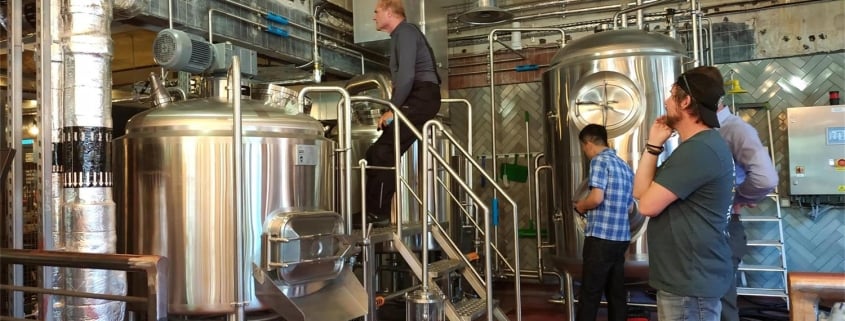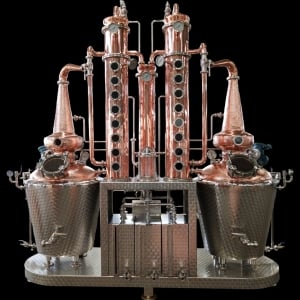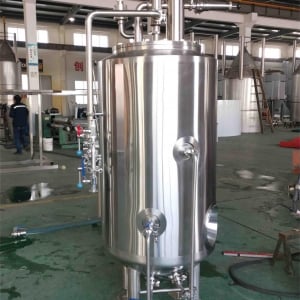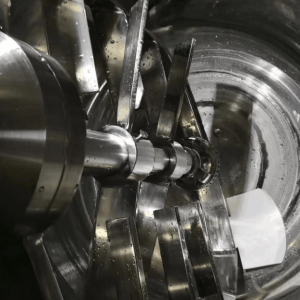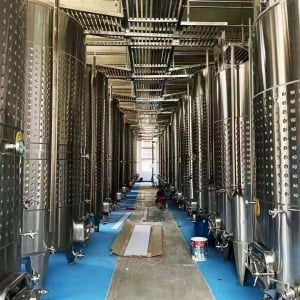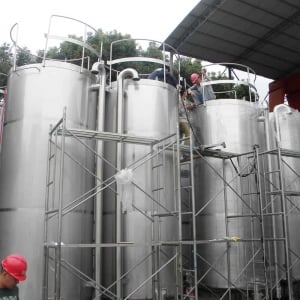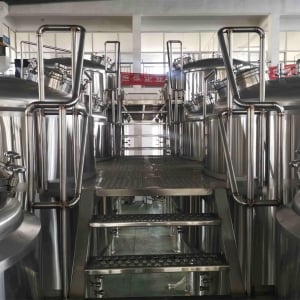Overview of pilot brewing equipment
Overview of pilot brewing equipment
Pilot brewing equipment refers to scaled-down brewing systems used for recipe development, testing, and quality control. They allow new beers to be produced cost-effectively in limited quantities before full-scale commercial production. This article provides a comprehensive guide to pilot brewing equipment covering types, features, sizing, costs, suppliers, installation and more.
Key features of pilot brewing systems:
- Scaled versions of full-sized brewhouses
- Capacities from 1-20 BBLs per batch
- Flexible designs for different recipes and experiments
- Cost-saving way to develop beers with minimized materials and labor
- Provide vital data to plan commercial production
Pilot equipment plays a crucial role in crafting the perfect pint before going big. Let’s explore pilot systems in-depth.
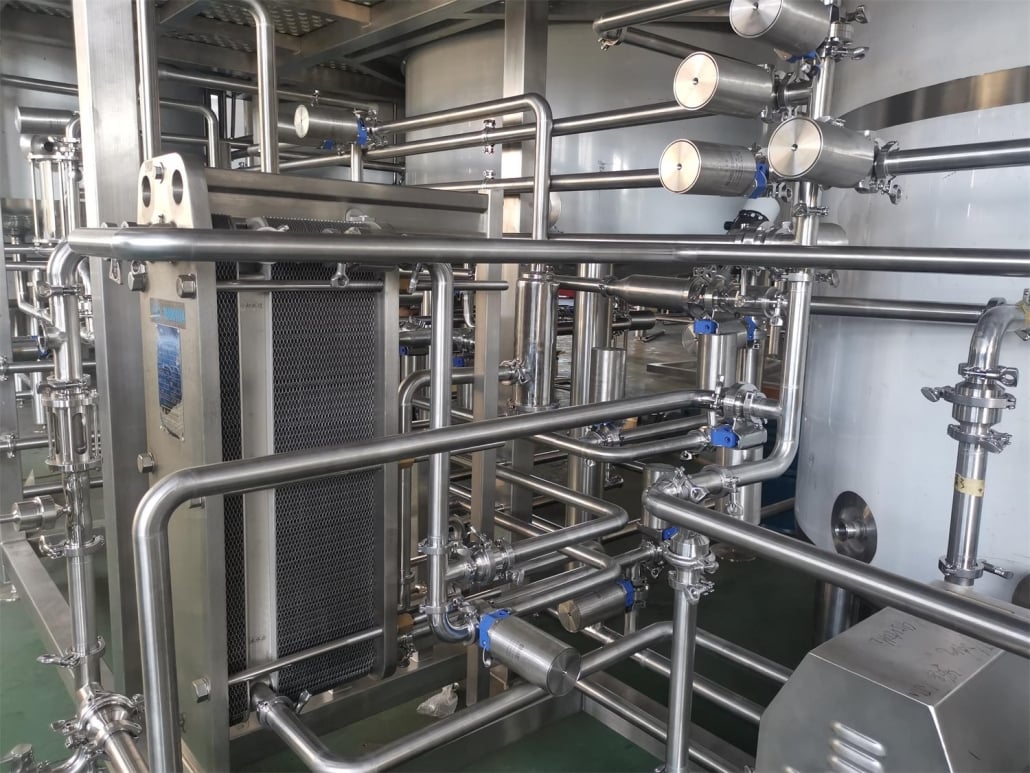
pilot brewing equipment Guide
Commercial pilot breweries contain modular, compact equipment for key brewing stages:
Mashing – Converts malt starches to fermentable sugars
- Mash tun – Mixes crushed malt (grist) and hot water for enzymatic conversion
Lautering – Separates sweet wort from spent grains
- Lauter tun – Sparges grist and filters wort through grate while rinsing sugars
Boiling – Sterilizes wort, extracts flavors, initiates reactions
- Kettle – Brings wort to a boil, usually with external heating
Fermentation – Yeast converts sugars into alcohol
- Fermenter – Closed, temperature-controlled vessel for primary fermentation
Maturation – Allows flavor development before packaging
- Unitank – Secondary aging tank that also serves as bright beer tank
Packaging – Fills product into kegs, cans, bottles, etc.
- Filler, seamer, labeling equipment – Modified versions of full-scale packaging line
Additional equipment like mills, pumps, heat exchangers, control systems tie the process together.
Types of pilot brewing equipment
Pilot breweries are available in different configurations:
| Type | Description |
|---|---|
| All-in-one brewhouse | Integrated mash tun, lauter tun, kettle in single unit with shared components |
| Individual vessels | Separate mash tun, lauter tun, kettle modules to customize layout |
| Manual / No automation | Requires user operation of pumps and valves for transfers etc. |
| Semi-automated | Automated steps but user oversight for recipe control |
| Fully automated | Pre-programmed recipes with computer monitoring and control |
Table 1: Types of pilot brewing systems by configuration and automation level
All-in-one electric and gas-fired brewhouses up to 3 BBL are popular pilot solutions. Larger systems may use modular vessels and partial/full automation. The level of manual operation vs automation impacts complexity, cost and ease of use.
Capacity, Design and Customization
Key pilot brewery parameters for planning purposes:
| Parameter | Options | Typical range |
|---|---|---|
| Batch size | 1 BBL, 3 BBL, 7 BBL, 10 BBL, 20 BBL etc. | 1-20 BBL per batch |
| Height | 16 ft, 24 ft total, adjustable | Must fit building with sufficient overhead space |
| Width | 8-20 feet | Depends on number of vessels and layout |
| Depth | 6-12 feet | Allow access for servicing and cleaning |
| Power supply | 208V, 240V 1- or 3-phase; steam; natural gas | Match commercial brewery utilities |
| Materials | Stainless steel, alloy steel | For food/beverage compliance and durability |
| Automation | Manual valves to computerized system | Level chosen by client based on skills and needs |
| Options | Grist case, sparge arm, temp gauges, sample ports, sight glasses, etc. | Application-specific accessories available |
Table 2: Pilot brewery capacity, dimensions and customization parameters
Pilot systems come in many configurations to suit unique production environments, batch sizes and budgets. Dimensions can adapt to existing floorspace limitations if pre-planned.
pilot brewing equipment Process
The typical pilot brewing process resembles full-scale commercial production, just on a reduced scale:
- Measure out batches of grain and water according to the recipe
- Mill grains if not bought pre-crushed; transfer to mash tun
- Mix mash at desired temperature in tun to convert starches and extract sugars
- Transfer liquid wort to lauter tun; sparge to rinse sugars from grains
- Pump sweet wort to kettle and boil with hops for sterilization and flavoring
- Cool boiled wort rapidly to pitching temperature
- Aerate wort and transfer to fermenter; add yeast
- Control fermentation temperature profile during conversion of sugars to alcohol
- Transfer to aging tank for clarifying, carbonating, final conditioning
- Package finished beer into kegs, bottles, cans using modified small-scale equipment
The process allows tweaking ingredients, temperatures, timings etc. to perfect recipes on a small scale before full production. Automated systems simplify many of these steps for the brewer.
pilot brewing equipment Suppliers and Pricing
| Supplier | Location | Price Range |
|---|---|---|
| Specific Mechanical | USA | $35,000 to $150,000 |
| Premier Stainless Systems | USA | $30,000 to $500,000+ |
| Rolec Servotron | UK | £15,000 to £120,000 |
| KEGBREW | Poland | €20,000 to €300,000+ |
| SPX Flow | USA | $20,000 to $250,000 |
| JVNW | Canada | $50,000 to $1,000,000+ |
Table 3: Selection of pilot brewing equipment suppliers and sample pricing ranges
Pricing varies from $20,000 up to $1 million+ depending on capacity, features and customization. Larger turnkey systems with full automation, controls and integrated utilities cost more. Talk to vendors about specific production goals and budget.
Installation, Operation and Maintenance
Implementing a pilot brewery requires planning for utility connections, site conditions, user skills and safety:
- Floorspace – Afford walkways for movement and service access
- Height – Ensure sufficient room for equipment dimensions and overhead lifts
- Electrical – Wire up control panels, automated systems, safety switches
- Plumbing – Connect vessels, pumps, transfers, cooling system to water
- Steam – Link kettles, heat exchangers if steam-based system
- Gas – Supply gas fuel to boilers/burners if applicable
- Ventilation – Fume hoods, vents for boiler exhaust and fermentation
- SOPs – Create standard operating procedures for consistency
- Staff – Assign and train employees on equipment operation and cleaning
- Hazards – Implement lockouts, emergency stops, safety guards as necessary
- Preventative maintenance – Schedule inspections, calibration, gasket/seal replacements
Coordinate amenities in advance for smooth startup. Train staff thoroughly before independent operation. Follow manuals and maintenance schedules for longevity. Consult manufacturers for spare parts, support and upgrades.
How to Choose a Pilot System Supplier
Consider these key criteria when selecting a pilot brewery vendor:
- Industry experience – Proven reputation building commercial-scale and pilot brewhouses
- Customization – Tailor designs and flexibility for recipes, future growth etc.
- Cost – Evaluate pricing models (fixed, modular, custom) to meet budget needs
- Lead time – Large customized systems may require months for design, manufacturing, shipping
- User support – Installation help, operator training, troubleshooting assistance
- Maintenance – Service contracts for maintenance, periodic validations
- Certifications – ASME pressure vessel code, CRN, CE marking indicating rigorous engineering
- Warranty – Coverage duration for workmanship defects; extended options
Get quotes from multiple established vendors on equivalent equipment based on needs. Compare proposals in detail accounting for hardware specs, automation differences, terms and post-purchase support. Tour existing installations when possible to view real-world functionality firsthand.
Pros and Cons of Pilot Brewing Systems
Advantages
- Lower capital investment than full production brewhouse
- Saves substantially on ingredients and labor per test batch
- Allows developing and proving recipes thoroughly before scale-up
- Provides flexibility for experimental hopping, adjuncts etc.
- Mimics attributes of final product like colors and aromas
- Portability in some compact systems to ship between locations
- Can benchmark performance of new processing methods or equipment at low risk
- Yields data for precise modeling of commercial production parameters
- Qualify beer characteristics accurately under inconsistent micro conditions
- Sized for smaller footprint if space constrained
Disadvantages
- Batch size limits revenue potential from successful recipes
- Additional upfront capital expense prior to full brewery build-out
- May require parallel development on different equipment scales
- Packaging equipment is often makeshift or manual for pilot volumes
- Automated systems carry software validation requirements
- Extended lead times for highly customized fabrications
- Matching output between pilot and commercial breweries can be challenging
- Scaled-down conditions do not always mimic full production microdynamics
- Can encourage excessive recipe experimentation delaying market release
Frequently Asked Questions
Q: Why buy pilot brewing equipment instead of contracting out test batches?
A: In-house pilot systems provide control over the entire R&D process while protecting IP of innovative recipes. They offer the flexibility to experiment freely based on consumer testing and feedback for refinements. Owning pilot equipment also translates operational experience to commercial production.
Q: What size pilot system is ideal?
A: 1- and 3-BBL systems suit most craft breweries launching a pilot program. They minimize capital costs but still yield useful volumes for evaluations. Larger producers may benefit from 7- to 20-BBL setups that mirror full-scale plants more closely at proportionally higher budgets. Every brewer’s needs are unique – discuss goals with the vendor to right-size the system.
Q: Can we resell our pilot equipment later to offset costs?
A: Contract and startup brewers actually constitute a secondary resale market for pilot systems. As companies expand production, pilot lines often get sold to smaller newcomers. Reputable pilot suppliers can also assist finding buyers for preowned equipment. Proper maintenance and service documentation ensures maximum resale value after its initial use.
Q: Are automated pilot brewing systems difficult for our team to operate and maintain?
A: Reputable suppliers offer operator training plus ongoing remote and on-site troubleshooting services for automated equipment. Maintenance is also simplified with diagnostics data plus reminders for periodic inspections, calibrations and validations as needed. Gradually introduce automation with operators present to ease the transition while benefiting from the improved repeatability and data collection compared to manual processes.
Q: What payback period can we expect on a pilot brewery investment?
A: Payback depends heavily on pilot system utilization for continued R&D and for special limited releases. If leveraged effectively full payback on equipment costs within 2 years is common – sometimes faster when considering expensive large-scale failures it averts. Ongoing costs are just ingredients, labor, maintenance and incremental packaging expenses which are modest at pilot volumes.

